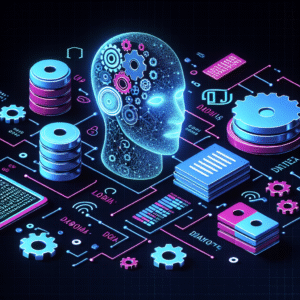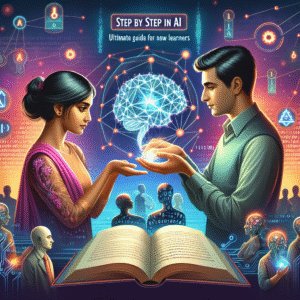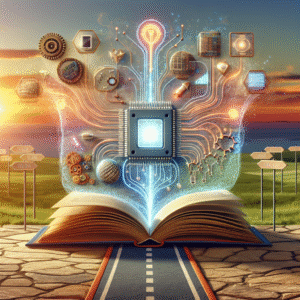Artificial Intelligence (AI) is rapidly becoming an integral part of our daily lives, influencing everything from how we shop online to how we manage businesses. However, the world of AI can be complex and overwhelming, especially when delving into its various types and applications. This article aims to break down the fundamental categories of AI to offer a clearer understanding of this transformative technology.
What is Artificial Intelligence?
Before diving into its types, let’s define what AI actually is. At its core, AI refers to machines designed to mimic human cognitive functions such as learning, problem-solving, perception, language understanding, and even creativity. The goal is to enable machines to think and respond like humans, enhancing productivity and transforming how we interact with technology.
The Types of AI
AI can be categorized into different types based on its level of functionality and capability. Understanding these types is crucial as they define what AI can and cannot do.
1. Reactive Machines
Reactive machines are the most basic form of AI technology. They are designed to respond to specific inputs with pre-defined outputs. A classic example of reactive AI is IBM’s Deep Blue, a chess-playing supercomputer that defeated world champion Garry Kasparov in 1997.
Characteristics:
- No memory-based functionality.
- Each decision is made solely with current data input.
- Lack of learning capability: These machines cannot evolve or improve over time like other AI systems.
Reactive machines work well in environments where tasks are stable and unchanging. However, due to their limitations, they’re often paired with more advanced AI systems in complex applications.
2. Limited Memory
Limited memory AI expands on reactive machines by incorporating past experiences or historical data to inform future decisions. This type of AI is prevalent in many contemporary applications, from virtual assistants like Siri and Alexa to autonomous vehicles.
Characteristics:
- Use of historical data to make better decisions.
- Ability to improve over time through data accumulation and training.
- Most modern AI applications fall into this category.
Limited memory AI systems are capable of learning and adapting but still operate within predefined frameworks and algorithms.
3. Theory of Mind
The theory of mind AI is currently a concept rather than a practical implementation. It aims to enable machines to understand human emotions, expectations, beliefs, and social interactions. This understanding would allow AI to interact and collaborate more naturally with humans.
Characteristics:
- Advanced cognitive capabilities that extend to emotional intelligence.
- Machines equipped with this AI would have a deeper understanding of human context.
Achieving theory of mind AI would mark a significant milestone in AI development, but considerable challenges in neuroscience and technology remain.
4. Self-aware AI
Self-aware AI represents the pinnacle of AI development. These systems would possess a level of consciousness and self-awareness equivalent to human beings. They would not only understand human emotions and behavior but also possess self-identity, autonomy, and emotional understanding.
Characteristics:
- Complete consciousness and self-understanding.
- Capable of making independent decisions.
- Ability to understand both human and machine emotions.
Currently, self-aware AI is purely theoretical and a topic of extensive ethical and philosophical debates. The potential risks and benefits of creating machines with human-like consciousness remain largely speculative.
Types of AI Based on Capability
Beyond functionality, AI can also be categorized based on its scope and realm of application. This classification provides further insight into how AI is used today.
1. Narrow AI (Weak AI)
Narrow AI is specifically designed to perform a single task or a set of related tasks. This is the most common form of AI we encounter daily. Examples include recommendation systems used by online shopping sites, voice assistants, and image recognition software.
Characteristics:
- Task-specific functionality.
- No general intelligence or adaptability beyond its initial programming.
Despite being limited to specific tasks, narrow AI has proven to be incredibly powerful in specialized fields like medical diagnostics and financial analysis.
2. General AI (Strong AI)
General AI refers to systems with generalized human cognitive abilities. Such systems can theoretically perform any intellectual task that a human being can. They would be able to reason, solve complex problems, and understand contextual nuances across different domains without human intervention.
Characteristics:
- Broad domain applicability akin to human intelligence.
- Ability to learn and perform diverse tasks.
While significant advances have been made towards achieving general AI, it remains a concept rather than reality, with formidable technical and theoretical challenges still to overcome.
3. Superintelligence
Superintelligent AI would surpass human intelligence in all aspects, from creativity and problem-solving to emotional and social understanding. This type of AI could potentially lead to innovations beyond human imagination but also poses significant existential threats.
Characteristics:
- Beyond human cognitive capabilities.
- Unmatched efficiency and problem-solving skills.
The creation of superintelligent AI raises profound ethical questions and requires careful consideration of safety measures and governance to ensure it benefits humanity.
Implications and Challenges of AI Development
The advancement of AI presents tremendous opportunities but also challenges. Ethical considerations such as data privacy, employment impact, and decision-making accountability are crucial as AI becomes more integrated into society. Moreover, as AI systems evolve, they demand regulatory frameworks that ensure they are developed and used responsibly.
Conclusion
Understanding the different types of AI helps demystify this complex field, offering insight into both its current capabilities and its future potential. From basic reactive machines to the speculative realms of self-aware AI, each type serves as a building block towards more advanced and nuanced applications. As AI continues to evolve, its role in reshaping industries and societies will undoubtedly expand, requiring ongoing dialogue and collaboration among technologists, policymakers, and the public to harness its power for the greater good.




